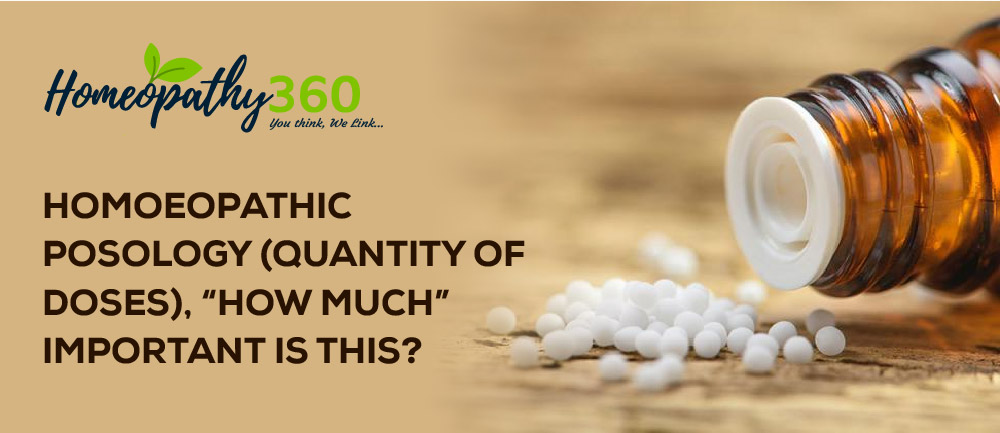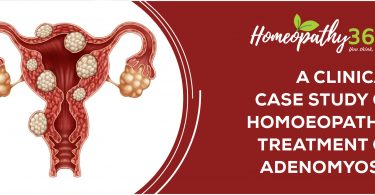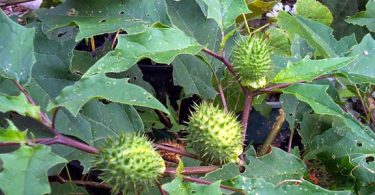
ABSTRACT
From the very beginning, young practitioners and many old ones too, for that matter, give too many doses and repeat too frequently, and also change remedies too often. They give no time for reaction of medicines, especially in case of chronic diseases; maintaining the principles of homoeopathy. They get doubtful, or hurried, or careless, or even get “rattled” if the case is serious. Then it is “all up with them,” until or unless they come to their senses and correct their mistakes. Sometimes, such mistakes cannot be corrected and a patient pays the penalty throughout his life. It pays to be careful and “go slow” in the beginning; then there will not be so many mistakes to correct. One should examine the case carefully and systematically, select the first remedy and potency with care, give the first dose if the single dose is decided upon, and then watch results. If the remedy and its dose is right, it will surely show results.
KEYWORDS
Posology, minimum dose, homoeopathy.
ABBREVIATIONS
Aphorism (§), Organon of Medicine (OOM), homoeopathic posology (H.P).
INTRODUCTION [1-3]
The term ‘posology’ originates from the Greek word, ‘posos’ meaning how much and ‘logos’ meaning study or discourse. The study of the doctrine of these doses is known as ‘posology.’[1] The 6th edition of ‘Organon of Medicine’ was translated into english and published by Dr William Boericke, 78 years after the death of Hahnemann, in 1921.[2][3] The most important changes from the 5th edition, in relation to posology include modified guidelines on dosage and repetition and method of dynamisation.[2][3] Hahnemann from very early came to entertain a strong aversion to the polypharmacy that prevalent in his time. In the essay, “are the obstacles to simplicity and certainty in practical medicine insurmountable?”, one of his main point was the impossibility of obtaining definite results, unless remedies were given singly.[3] Our ‘Master Hahnemann’s only objection to local applications arouse from their failing in most cases to cover the totality of the symptoms. When the affection was local from the first, or had become so secondarily, he was entirely in favour of the topical use of the indicated remedy, and this doses far more substantial than those he recommended for internal administration’.[3]
He also emphasized the administration of the similar remedy should be given rarely. He never repeated the dose until the action of the former remedy ceased. The single dose as well as the single medicine continued to be his ideal for many years thereafter. The similar remedy needs to be administered constitutionally, singly and rarely.[3]
DISCUSSION [1],[2],[4-8]
- What does homoeopathic posology means :
A homoeopathic ‘dose’ means the particular preparation of medicine used, the quantity and form of that preparation as well as the number of administration of the medicine. In short, homoeopathic ‘dose’ includes potency, quantity, form, and number of administration of the medicine.[1][2]
- Facts should keep in mind about doses :
The old school believes in administration of crude medicines, which do more harm than good. Two German scientists, Prof. Arndt, an eminent biologist, and Prof. Schultz, a leading pharmacologist, have studied the opposite effects of drugs and have laid down their finding in what is called Arndt- Schultz law of pharmacological action. According to Arndt-Schultz law, “small stimuli encourage life activity, strong stimuli tend to impede it and very strong stimuli are apt to stop or destroy it.”[2][4]
Dr Hahnemannwas originator of the science of attenuation of drugs. After having learnt the effect of crude drugs described on irrational basis in the treatment of diseases, he found out the truth in medicine. His experiment with Peruvian bark led him to enunciate famous action, “similia similibus curentur”. He found that crude drug applied on the law of similar resulted in violent reactions. His ever-searching mind thought that of reducing the drug substance which gave him surprising result. Encouraged by this experiment, he established his theory of minimum dose and drug dynamisation.[2][5] The fundamentals of H.P are represented in the trinity of : a single remedy, minimum dose, and adequate repetition.[2][6]
Master Hahnemann in his ‘Organon of Medicine’ stated that a single, simple remedy should be given at a time. He also advised not to give one remedy for one set of symptoms and another remedy for another set of symptoms in the same individual (§ 272). It is wrong and useless to administer a complex means while single means suffice (§ 273). If a single medicine is given strictly on homoeopathic principles, it renders efficient aid by itself alone (§ 274).[2]
- What are the possible types of doses :
1. Maximum dose:- It is the maximum or largest possible amount of medicine, which can be taken at a time by an adult, not harmful to human life.[1]
2. Lethal or fatal dose (also known as toxicological or narcotic dose): – It is such amount of dose, which can cause death of living being. The fatal dose of different substances may be different, which depend upon their toxicity.[1]
3. Booster dose: – A subsequent dose given to enhance the action of initial dose.[1]
4. Fractional or refractive or divided dose: – It is fraction of a full dose, which is to be taken at short intervals.[1]
5. Physiological dose: – Physiological dose stimulates the normal physiology or functions of the different organs or systems of our body, hence the symptoms thus appearing are known as physiological symptoms.[1][7]
6. Minimum dose: – “It is that dose which is sufficient to overpower and annihilate the disease and capable of producing slight homoeopathic aggravation scarcely observable after its ingestion.” (§.280). It is that amount of medicine, which is though smallest in quantity produces the least possible excitation of the vital force, and yet sufficient to effect the necessary changes in it (§.246)[2]. It is not capable of producing symptoms when used therapeutically; and causes only slight aggravation (temporary) or intensification of already existing symptoms but never produces new symptoms.[7]
- How doctrine of dosage is accompanying with law of mutual action & third law of motion:
The homoeopathic doctrine of dosage, like the law of cure, was based upon the discovery of the opposite action of large and small doses of medicine. It is another application in medicine of, the Law of Mutual Action – the third Newtonian law of motion- “Action and Reaction are Equal and Opposite.” Everyone at all acquainted with the action of drugs knows, for example, that Ipecac in large doses causes nausea and vomiting and in small doses, under certain conditions, will cure the same; that Opium in large doses will cause a deep sleep or narcosis, arid in small doses, under certain, conditions, will cure the same.[1][7]
- Advantages of applying small dose in Homoeopathy:
The homoeopathic dose, therefore, is always a sub-physiological or sub-pathogenetic dose; that is, a dose so small as not to produce pathogenetic symptoms; for we desire, not to produce more symptoms, but only to remove and obliterate symptoms already existing. It must also be given in a dose so small that it does not produce a severe aggravation of the already existing symptoms.[1][7] The success of homoeopathic treatment depends to a great extent on the correct selection of the potency and the requisite potency should be selected considering the susceptibility of the patient.[8]
DISCUSSION:[2][7][9-15]
Master Hahnemann in § 152 of the Organon of Medicine, has given explicit directions of how the choice should be made from among the drugs which exhibit effects stimulating those of the whole disease picture in hand, and how the final differentiation depends upon the individualistic or peculiar symptoms. The interpretation of what constitute the striking or the singular symptom is left to the physician and his judgment, but it is elucidated through the seven considerations, i.e. quis (changes of the temperament and personality of the patient), quid (nature and peculiarities of the disease), ubi (seat of the disease), quibus auxiliis (concomitant symptoms), cur (cause), quomodo (modalities), quando (time modality).[2][9][10]Understanding of the rule that govern the selection of the dose and its repetition is possible only if the physician has a firm understanding of susceptibility and remedy reaction and a good acquaintance with the law of dynamics[11]. The disease causes are limited to show their ability, i.e. to cause any changes in health to certain states and conditions which is called susceptibility.[12]There are five considerations that influence in the choice of the dose including the susceptibility of the patient; the seat of the disease; the nature and intensity of the disease; the stage and duration of the disease; the previous treatment of the disease.[7] In order to cause a mild, certain and permanent cure, in regard to the selection of the remedy, according to Hahnemann, resolves itself into a purely empirical act, an almost mechanical comparison of the drug symptoms with the disease symptoms and the medicine found to be similar with respect to symptoms of the disease is the most appropriate, the most homoeopathic remedy. But it is not true that all the symptoms are of equal importance in guiding the selection of the medicine; as described in §153 of Organon of Medicine, that it is the most striking, singular, uncommon, peculiar, or characteristic symptoms of the disease that are to be kept chiefly and most solely in view.[13] Homoeopathic treatment is not only distinguished by its simple evolution from facts, but also by its simple exhibition of methods of cure. Homoeopathy does not necessarily mean a small dose, as it is often erroneously supposed to do; the term is intended to designate a certain relation of medicine to disease, not a certain quantity of the medicine. The small doses administered in harmony with the law of homoeopathy prove to be efficient because: firstly, they are exactly suited to the exalted susceptibility of the diseased part, secondly, they act directly on the part which requires to be influenced and thirdly, because only one remedy being administered at a time, its action not interfered with other drugs.[14] Homoeopathic selection is not enough for a gentle cure. But the smallness of the dose is equally important.[15]
CONCLUSION:[6][15-16]
A fatal error prevails in many quarters, for example, increasing the size of the dose makes it more homoeopathic. It is not clearly evident that the attenuation should be similar to the plane of the perversion, i.e. the disorder in the economy. Increasing the degree of the potency may hasten the cure, but it often increases the aggravation; diminishing the potency diminishes the homoeopath city, and if the quantity of the drug is increased, the relation departs from the similar to dissimilar, hence loses the curative power.[16] The smaller the dose of a truly indicated medicine, the more gentle remedial effect is produced.[15] The simillimum is the most similar remedy corresponding to a case, covering the true totality of the symptoms and always curative. Also, in incurable cases, it is the best possible palliative remedy. The selection of the simillimum involves its administration singly, without admixture of any other medicinal substance. Alteration or rotation of remedies sometimes leads away from accurate and definite knowledge of drug effects, and sooner or later leads to polypharmacy.[6]
REFERENCES:
- Banerjee
DD. Augmented Textbook of Homoeopathic Pharmacy. 2nd ed. New Delhi:
B. jain publishers (P) Ltd; 2004. p347-354.
- Dudgeon RE, Boericke W. Organon of Medicine by Samuel Hahnemann. 5th and 6th ed. New Delhi: B. Jain publishers(P) Ltd; 2015.
- Hughes R. The Principles & Practice of Homoeopathy. New Delhi: B. jain publishers (P) Ltd; 2018: p.107,114,117.
- Roberts HA. The Principles and Art of Cure by Homoeopathy. New Delhi: B. Jain publishers (P) Ltd; 2013.
- Hahnemann S. The Chronic diseases, Their Peculiar Nature and Their Homoeopathic Cure. New Delhi: B. Jain Publishers (p) Ltd; 2016.
- Boericke W. A Compend Of the Principles of Homoeopathy. New Delhi: B. jain publishers (P) Ltd; 2019.
- Dey SP. Essentials of principles and practice of homoeopathy. 4th ed. Kolkata: Published by Smt. A Bhattacharya; 2009.
- Boger CM. Boenninghausen’s Characteristics & Repertory. New Delhi: B. jain publishers (P) Ltd; 2020: p.viii-xiv.
- Boenninghausen BCMFV. The Lesser Writings. New Delhi: B. jain publishers (P) Ltd; 2000.
- Dhawale ML. Principles & Practice of Homoeopathy. 4th ed. New Delhi: B. jain publishers (P) Ltd; 2018.
- Kent JT. Lectures on Homoeopathic Philosophy. New Delhi: Indian Books & Periodicals Publishers; 2012:p108.
- Dudgeon RE. Lectures on the Theory and Practice of Homoeopathy. New Delhi: B. jain publishers (P) Ltd; 2019.
- Ruddock EH. The Stepping-stone to Homoeopathy & Health. New Delhi: B. jain publishers (P) Ltd; 2002.
- Ganguly SN. Annotated Text of Hahnemann’s Organon of Medicine. 5th ed. Shahdara: Birla Publications PVT. LTD; 2007.
- Kent JT. Lesser Writings. New Delhi: B. jain publishers (P) Ltd; 2004.
ABOUT THE AUTHORS:
Dr Tamara Afroza
Currently pursuing MD, Hom. (Part – I) in Practice of Medicine from The Calcutta Homoeopathic Medical College & Hospital. B.H.M.S (Honours) from D.N.DE Homoeopathic Medical College and Hospital. Kolkata, WB.
Dr Biswajit Bera
Currently pursuing MD, Hom. (Part-II) in Practice of Medicine from The Calcutta Homoeopathic Medical College & Hospital. B.H.M.S (Honours) from The Calcutta Homoeopathic Medical College & Hospital. Kolkata, WB.



